Could a Montessori environment be a good fit for a child on the autism spectrum?
Montessori environments have distinct characteristics that may be good for Autistic children.
This post may contain affiliate links. I may earn compensation when you click on the links; at no additional cost to you. Please see the disclosure policy for more information.
The Montessori Method and environment is very unique. The philosophy is based on individual learning, child led instruction and the development of the child. The environment is carefully and thoughtfully set up & maintained based on the needs of the children, their various developmental levels and is inviting to the children. The Montessori environment is aesthetically appealing to the eye, is strategically designed and provides a sense of calm and order. For children who are on the autism spectrum, the Montessori environment has characteristics that may be ideal for their success and overall learning.
DISCLAIMER:
The following information is for informational purposes only. The following information is not meant to diagnose or treat and should not take the place of seeking the advice of a trained and qualified healthcare or medical professional.
The link between Montessori and Autism
As stated by Dr. Lori Ernsperger, an autism specialist with over twenty years of experience; “the best way to make sure your students learn well is to ensure that the physical layout of your classroom is maximized and workstations are clearly delineated.” Following what Dr. Ernsperger has presented, a Montessori environment fits the description on what she has determined is an ideal environment for children on the autism spectrum.
A Montessori environment is very distinct and individualized. The materials are mostly made of natural wood, and along with neutral colors are meant to soothe the senses, attract the children to the materials, and not distract from their learning. Environments that contain bold, bright colors can often be overstimulating to the children and the adults in the room. Montessori classrooms are open, light & airy; and are peaceful and uncluttered.
Related post: No two minds are alike: A story about a friend with Autism book review
All learning environments can be an integral part of a child’s learning. An enriching, inviting and stimulating environment can provide an increased chance of children being successful in their learning. Not only will they learn more, they will enjoy it and be more willing to learn! If an environment is boring, drab, dark and not visually appealing, it could be harder for the children to want ti engage and learn; AND make it hard for the teacher to find ways to motivate themselves to teach. I must say, personally, if my classroom was drab and boring, it would be a STRUGGLE for me to want to teach. I prefer an environment that is fun and lively, but not overstimulating and distracting.
5 ways Montessori may be a good fit for a child on the Autism Spectrum
These tips on selecting an appropriate environment for a child on the autism spectrum are recommended by a autism specialist. Please note that each child is different, and not every Montessori environment is the right fit for each child. There are many things to consider when choosing a learning environment for your child.
-
Pay special attention to the physical design and layout of the classroom
Always consider the flow of the classroom. Think about how children and adults are able to maneuver and move throughout the classroom; making sure to keep it as easy as possible. Provide areas that are intended for smaller and larger group activities, and arrange the furniture and shelving to assist in that. Montessori environments are well known for their design and layout characteristics; since they allow for children to roam freely through the classroom during the work period.
-
Be mindful of sensory stimulation
It is probably best to try to avoid overly stimulating the senses. As stated before, overstimulating can be a distraction and disrupt concentration. Consider things like lighting, windows, floor & window coverings and ceilings. Equipping the classroom with carpet or investing in large area rugs to reduce the noise level, have dimmer settings on lights and use window coverings that allow natural light in; but not too much. That is one of the things that makes a Montessori environment different; we try not to overstimulate the children with bold, bright colors on the walls, shelves and materials.
-
Try to eliminate or reduce clutter as much as possible
Excess or unused furniture, classroom teaching aids and even teacher collectibles can be a distraction. Try to keep the classroom free of unused or rarely used items so that the children will not be distracted by them. If possible, store these items away and bring them out as necessary or when needed. If you walk into any Montessori classroom, you will notice how organized and orderly the materials and shelves are.
-
Use visual aids to define spaces and increase independence
Using visual aids throughout the classroom can help children in a variety of ways. It helps them to understand the flow of the day, anticipate what activity comes next and can keep the day running smoothly. Using visual aids on shelving can remind children how and where to put their work away. It increases their independence and boosts their confidence as well. Montessori classrooms use subtle visual aids as well to help children learn how to put their work away and where the group area is as well.
-
Have an area of the classroom where children can calm down and regroup
Preparing a calm down area for children to use if needed is important part of the environment. Make sure the area is free of distractions and can be used for as long as the child needs. This calm down area should never be used as a form of punishment, but an area for a child to relax, calm down and refocus. In a Montessori classroom, this area is referred to as a Peace Area or Corner. Sometimes it has a table, small floor pillows or a chair placed in an area of the classroom that is not near the hustle and bustle of the classroom. It has items that are good for reducing stress and provide calming effects. These are special items that are specific to the peace area, and are not found in other areas of the classroom.
As you can see, there are many benefits and positives when considering if a child on the autism spectrum will thrive in a Montessori classroom environment. The Montessori environment provides many of the characteristics of an ideal learning environment that are recommended by professionals. With Montessori being an individualized, child-led learning philosophy, the non-traditional, open flow of the classroom may be worth looking in to for your child.
Related post: Trying to find a Montessori preschool for your child? Check out these 6 tips!
Looking for more resources or information for children on the autism spectrum?
Check out these books!
In conclusion
Not every learning environment is a good fit for each child’s development. The most important thing to remember is to do your research and visit the environment if possible. Get a feel of the overall feel of a place by visiting, asking questions and observing. You know your child the best, so doing your best to research each environment first will do you and your child good!
I hope that you find this information is helpful and insightful to you as a parent and those who are teaching professionals as well!

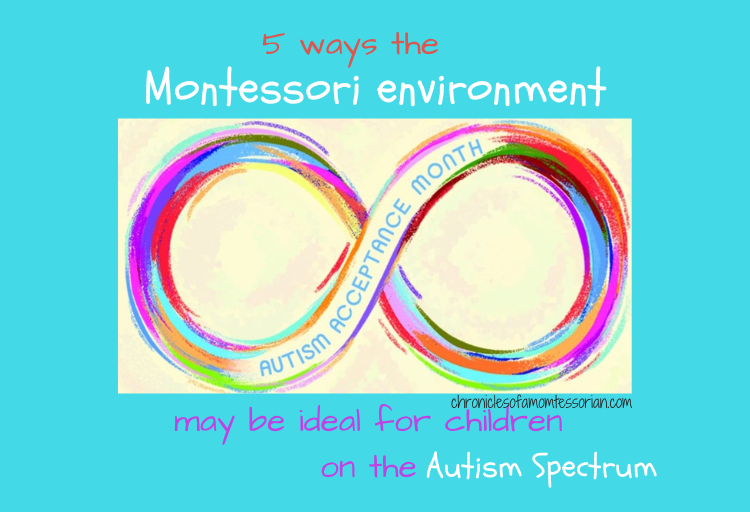


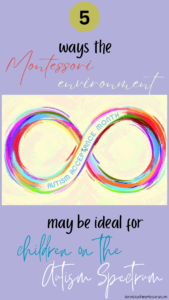


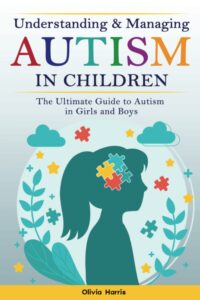



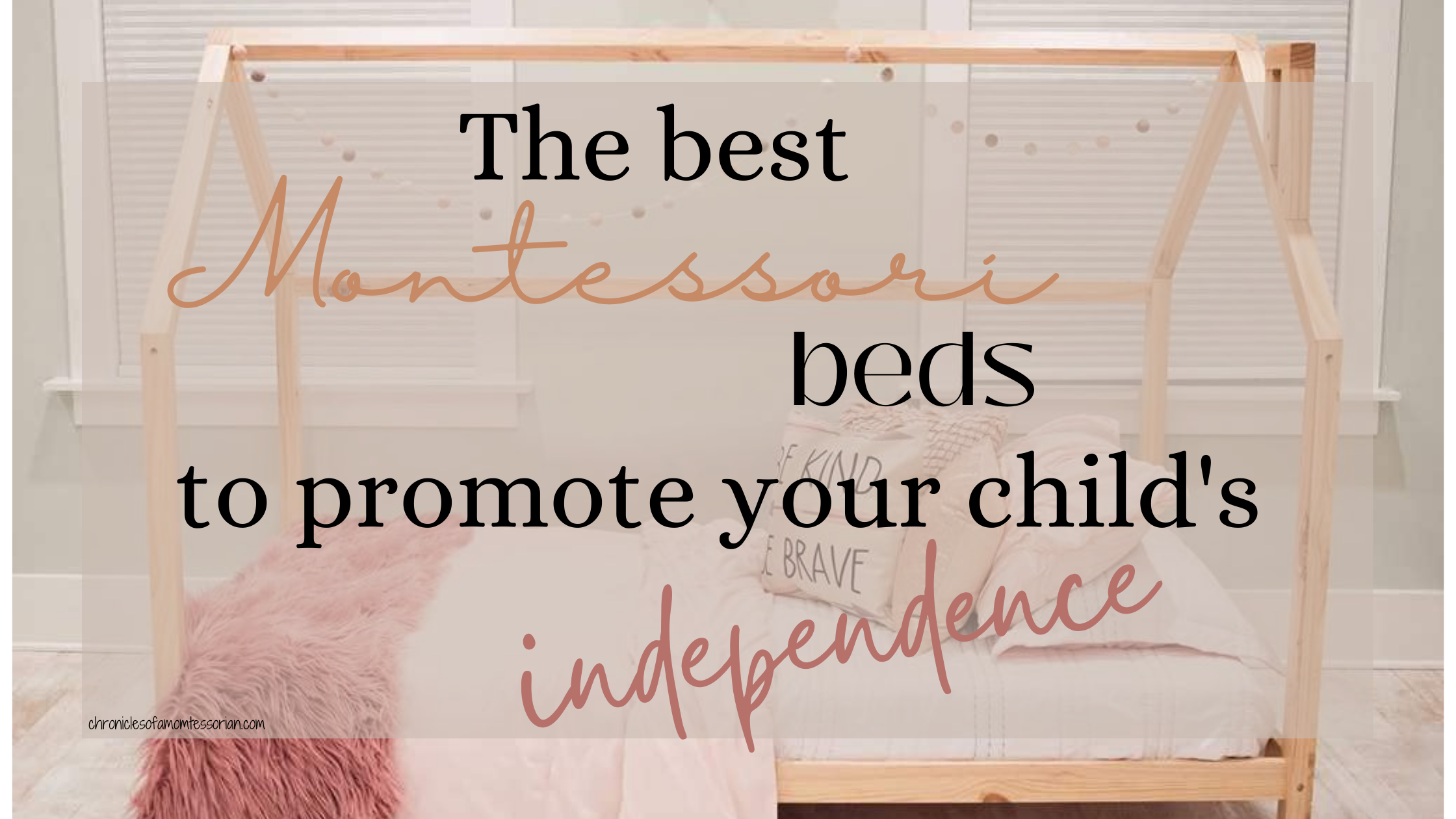


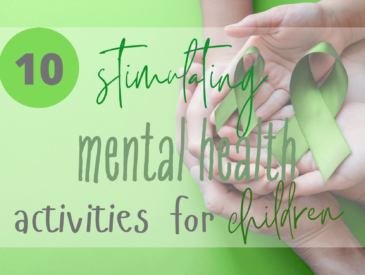
A wonderful post! 4 of my children went to a Montessori Nursery and absolutely thrived, however my 5th child, who is quite possibly on the autistic spectrum went and they couldn’t cope with him. They immediately stated he couldn’t hear, see, had no empathy, was a danger, the list went on – none of which were actually true. He struggles socially and they weren’t prepared to help him without getting him statemented. It damaged his confidence greatly and has taken years to rebuild.
That is sad to hear Rebecca. Not all Montessori schools are willing to put in the extra effort to welcome a child on the autism spectrum into their community. Hopefully you were able to find a good, loving environment for your son.
I have a cousin that is on the autism spectrum and thrived in a Montessori environment. It is wonderful to be able to see them become immersed in an environment where they can be themselves and learn!
Thanks for joining #WanderingWednesday!
Shiree, yes being in the right Montessori environment can yield so many positive outcomes! I love #WanderingWednesdays!
I can see how structure can be vital to these kiddos growth! What a comprehensive review of the pros for this type of learning environment!
#WanderingWednesday
Thanks Lori!
This is a situation I personally have never dealt with but I love reading ways to help improve the environment for children with autism. This is a great article, thank you for sharing!
Thanks Kari!
I enjoy learning from your articles!
That’s very nice of you to say Amanda, thank you!
Wonderful things to consider for those parents with a child on the autism spectrum. I see many of these children in my chiropractic office and they are just AMAZING children. They absolutely love calm, non-stimulating environments and like order to what goes on.
This is a really well thought-out post, especially when it comes to classroom layout and sensory issues. These considerations may well benefit neurotypicals, too!
Thanks Maggie!
Great info how you can customize things to meet special needs!
This is such a professional post. You have so much to share and we have so much to learn.
Thank you Verla!????
This is a great article! I will be sharing with my cousin who has a son with autism. I know she will appreciate this.
Thank you Kristi, I appreciate you sharing it!
I learn more about Montessori with each of your posts. It is something I have “known” about, but never really understood. This is really interesting and sounds like it will bring many positive outcomes. Thank you for sharing!
Thanks Mollie! I’m glad that you are able to learn about Montessori through my posts!
My son is autistic and I agree with you that a Montessori school is a perfect fit for a child with autism.
Thanks Laura!
Great tips! It’s awesome that you are spreading awareness for autism. 🙂
Thank you Heidi!
These are fantastic, practical steps!
Thanks Ashley!
This makes so much sense. I work in adult training/instruction and can see this working for us! The environment sets the tone and aids in successful sessions.
Thanks Stacey!
I have always been intrigued by the Montessori style of learning. I love reading your posts!
Thanks Amie! Montessori is very intriguing!
Valuable steps and information! My son has a specific learning disability and before he was diagnosed our pediatrician recommended home schooling him! The thought intimidated me!
I have several people who would find this article extremely helpful. Children with autism are very smart but have a hard time communicating their thoughts. These tips make it easier on them and also on those teaching them.
That’s great Monica! Please feel free to share it with those who you think would find it helpful.
Many children would benefit from Montessori schools. Children all learn at a different pace and way and adapting to those is essential. Nice post!!!
Thanks Rebecca! I totally agree with you!
Great post. We followed some of these guidelines at the dyslexia school to minimize distractions and prevent over stimulation. It works really well.
Thank you Dee!
Great tips! Thank you for caring so much about this issue!
This is a wonderful post. I worked as a Speech Pathologist for 30 years and over those years most were spent with kids ages 0-5. I worked with many children with ASD. Thank you for bringing awareness and education!
I absolutely love the Montessori approach
It makes good sense that having a calm down area and a more relaxing aesthetic would be helpful for children on the autism spectrum. The Montessori approach makes good sense for so many kids, for that matter!
Thank you for this information. Do they have Montessori for older children., age 11 to be precise?
Hi Yemi! Glad you enjoyed this post. Yes, there are some schools that offer Montessori for older children. The ages for Montessori are grouped in 3 year spans; so 3 to 6 year olds, 6 to 9 year olds, and 9 to 12 year olds. I am trained for 3 to 6. Hope this helps!
I agree that the individualized, child-directed nature of Montessori could really allow children with Autism to shine and play on their strengths!
My child is on the spectrum and I am definitely even more curious about Montessori now, thanks!
As a professional and passionate advocate for the special needs community, this was a very interesting read! I have learned about a lot of these helpful things for students with autism or ASD in my studies. In my young toddler classroom, I have a calm down area that we call “cozy corner.” It has bean bags and pillows and we let the children lay here when they are feeling tired or having a rough time to calm themselves. It is very helpful for them. We also have many visual aids for everything in my classroom as part of the curriculum too. All of the toy buckets and shelves are labeled with a picture of the toy and the name of the toy to help the children learn where they belong. This is also helpful to new teachers and floaters. Thank you so much for sharing this information!
Hi, Anitra! Just found your content over on a Facebook group 🙂 I absolutely loved this article. As a mother of two autistic children, it really makes a lot of sense. Mine are out of school now, but I still consult with homeschoolers and I’m bookmarking this to send as a resource, if that’s okay, for other parents of children on the spectrum. Definitely sharing this! Thank you!
This is really informative! My daughter is actually getting screened for autism so this is a very good resource for us
Wonderful information. As an educator this hits home. It is important to provide the right environment for all children so they are able to learn no matter their disability.
This is awesome. Great helps for children with autism who are smart but have issues getting their points across!
I work with children who are on the autistic spectrum in schools and I like to read about how we can improve the environment for the children to learn. This is a great article. Thanks for sharing.
These are great resources. Thanks for sharing.
I never knew this, I learned something new! Thanks for sharing
Such helpful information in defining helpful ways of montessori methods work
I forget that Montessori has various helpful learning techniques that include visuals. This is perfect for my nephew who has autism. Thanks for breaking this down. Sharing with his mama.
I used to work as an Admissions Director for a Montessori school. The Montessori environment can be a great place for children on the spectrum to learn and grow.
This is spot on. I have a grown daughter and son on the spectrum, whom I homeschooled. I looked to Montessori and Waldorf for ideas on how to provide the structure and organization that they needed while not overwhelming their senses. Thank you for raising more awareness that it IS possible!
Very informative. Thank you for sharing.
I love that they have a learning plan for kids on the spectrum. This is so important to meet the needs of all kids.